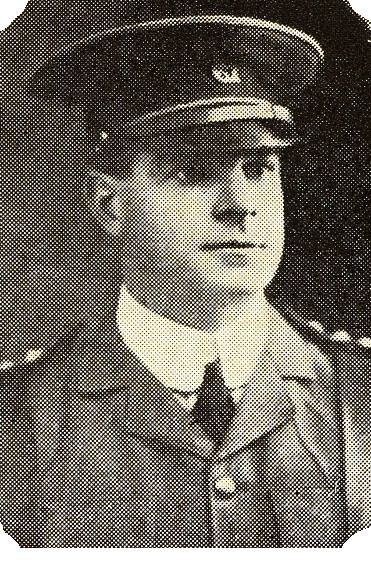Position(s) Centre Role Footballer | Place of death Gallipoli, Turkey Name Herb Hunter | |
 | ||
Full name Herbert Humphreys Hunter Date of birth (1881-11-18)18 November 1881 Date of death 8 May 1915(1915-05-08) (aged 33) Died May 8, 1915, Gallipoli, Turkey Education | ||
Herbert Humphreys "Herb" Hunter (18 November 1881 – 8 May 1915), LDS (Licentiate of Dental Surgery), DDS (Doctor of Dental Surgery, MACD (Member of the Australian College of Dentistry), a champion athlete, and an expert dental surgeon, was an Australian rules footballer who played with Essendon in the Victorian Football League (VFL).
Contents
- Family
- Education
- Sportsman
- Footballer
- Athlete
- Bendigo Hare and Hounds Club
- Soldier
- Remembered
- University of Pennsylvania
- H H Hunter Memorial Shield
- H H Hunter Athlete of the Year
- References
He died in action at Gallipoli on 8 May 1915.
Family
He was one of five sons and five daughters of George Frederick Hunter (1832–1907), an English civil engineer born at Ramsgate, who took over the established Kent Brewery, in McRae street, Bendigo, and Elizabeth Humphreys, whom he married on 11 September 1862. He was born in Bendigo (then known as Sandhurst), on 18 November 1881.
Education
Educated at Caulfield Grammar School and Melbourne Grammar School, he studied dentistry whilst resident at Trinity College at the University of Melbourne, where he gained the diploma for L.D.S. (Licentiate of Dental Surgery) in December 1904.
He went on to continue his studies at the University of Pennsylvania, where he gained a D.D.S. (Doctor of Dental Surgery) in 1906.
He became a member of the Australian College of Dentistry in 1906, and was registered to practise in the State of Victoria on 20 December 1907.
Whilst at the University of Pennsylvania he was admitted to the Delta Sigma Delta (ΔΣΔ) dental fraternity.
Sportsman
A sportsman with multiple talents, he was awarded a double Blue in football and athletics whilst at the University of Melbourne.
Footballer
Whilst still at Melbourne Grammar, he played three senior matches for Essendon. He made his debut, playing at centre, against Collingwood on 23 May 1900. The match was postponed from the previous Saturday (19 May), and was rescheduled for Wednesday, 23 May; a public holiday celebrating the Relief of the Siege of Mafeking. The Age noted that "Hunter, centre, Groves and Hastings on the wing formed a splendid centre line [for Essendon]".
He played his second match, at centre, against Carlton on 26 May 1900, on a very wet ground which he did not handle well. and played his last match, again at centre, on 2 June 1900 against St Kilda.
He immediately resumed schoolboy football, and returned to playing with Melbourne Grammar's First XVIII.
Athlete
On 4 January 1901, at a special "Commonwealth Celebration" championship competition, held at the Sydney Cricket Ground as part of the celebrations held to mark the proclamation of the Federation of Australia on 1 January 1901, competing for the Victorian Amateur Athletic Association, Hunter registered some outstanding performances, including:
Two days earlier, at the 33rd gathering of the Highland Society of New South Wales, also representing the V.A.A.A., and also at the Sydney Cricket Ground, he had taken the significant Open Age amateur sprinter's handicap "double":
Bendigo Hare and Hounds Club
In 1903, he was captain of the Bendigo Hare and Hounds athletics club.
Soldier
Prior to the Great War, Hunter had been a member of the 67th (Bendigo) Infantry Battalion, in the Citizens Military Forces. During his time with the Citizens Military Forces, he held the rank of Second Lieutenant (from 9 April 1908), Lieutenant (from 20 March 1911), and Captain (from 1 July 1913).
On 29 August 1914, he enlisted in the First A.I.F. His enlistment form was signed by Lieutenant Colonel H. G. "Pompey" Elliott, who had raised the 7th Battalion in Bendigo, and had enlisted men from Western and Central Victoria. Elliot appointed Hunter a Captain in the 7th Battalion, First A.I.F., in charge of "G" Company; a company of men mainly enlisted from Bendigo and the wider Bendigo District.
He was part of the Landing on Gallipoli on 25 April 1915; and was killed in action during the assault of Krithia, less than two weeks later, on 8 May 1915: "In the 7th, advancing precisely as they had been trained to do … Captain Hunter – a famous Victorian athlete – was wounded and then hit again and killed" (Bean, 1923, p. 29).
Remembered
Hunter has no known grave. He is commemorated amongst the 20,000 names at the Helles Memorial.
University of Pennsylvania
In 1920, the following entry appeared in a supplement to the University of Pennsylvania's October 1920, Alumni Register:
H. H. Hunter Memorial Shield
In July 1920, a beautifully designed shield, now generally known as "the Hunter Shield", carved in Australian blackwood by the prominent South Yarra artist, Mr Robert Prenzel, was presented to the Victorian Amateur Athletic Association (now known as Athletics Victoria) by Mr. M. P. (Marmion Percy) Adams, the author of The Rich Uncle from Fiji: and Some of his Relatives (1911), on behalf of a group of subscribers, to be a perpetual challenge trophy for the Association's annual track championship competition.
The shield's carving depicts Hunter beating the (later) Olympian athlete Nigel Barker by six inches in the 1901 national championship 100 yards race. Beneath the carving is a copper representation of an open book, upon which the names of the annual winners could be displayed.
Since 2001, when the Victorian Athletic League was discontinued, the Hunter Shield represented the best performing male club in Victoria; and, since 2009, the winner is based on female and male performances at the open Victorian Championships.
H. H. Hunter Athlete of the Year
In 2008, Athletics Bendigo renamed its athlete of the year trophy "the H. H. Hunter Athlete of the Year" in Hunter's memory.
